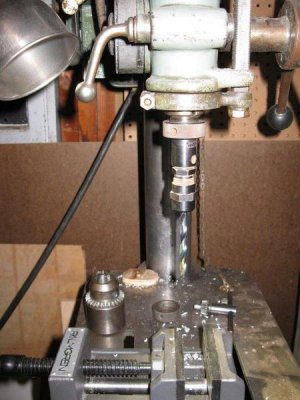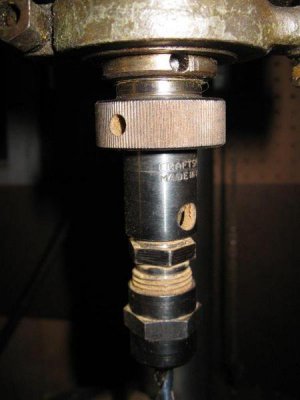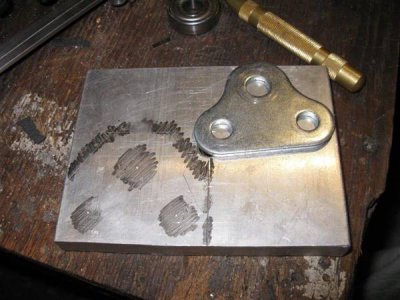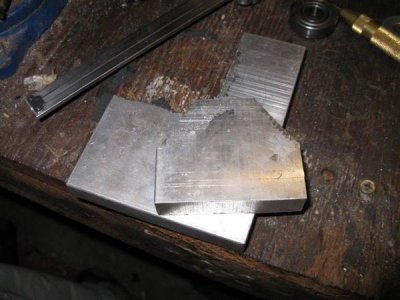All you need to do is turn a STEEL-NEVER USE BRASS,it is slippery and the end mill WILL suck out and ruin your work and possibly break the end mill,cylinder 1/2" O.D.,and 3/8" I.D.. Slit it once and use it in the 1/2" collet.
I had some old end mill bushings I could have included had I known you'd want them(IF I could find the box). But,postage is nearly $5.00 a pop. They would still have needed slitting as they were designed to be used with a set screw,and have an opening in their sides for its passage.
The bushing will no doubt close a little bit upon being slit,so make them out of hot rolled steel,not nice,smooth cold rolled. Cold rolled looks nice,but it is full of stresses from being cold rolled. It is much more liable to warp and make trouble than hot rolled. You may still have to force the bushing open a bit,even with hot rolled. Don't force it too much,or it won't go into the 1/2" collet,which you certainly do not want to harm. THE COLLET IS NOT HARDENED. Be careful with it. Sears stuff was cheaply made!! And is perhaps even worse today. At least,it runs true,and I hope the collar threads on. You can count yourself lucky if it does fit. Even .001" too small,and the threads will not screw on.
If you can't tell what you have because it is old and rusty,heat it up red hot with a Mapp gas torch,and let it AIR COOL. Then,it will be like hot rolled. An effective,simple way to concentrate your torch heat is to take 2 or 3 DRY bricks,or white fire bricks if you have them. Put them together to make an interior corner. Put your piece of metal in the corner. The torch will heat a much larger piece of metal red hot that way.
BE SURE your bricks do not let the torch heat run down between them and set fire to a wooden table beneath them. It would be better if you stacked up the bricks 2 bricks deep to form the floor of your corner,and do not use a flammable work surface. You can easily ruin a piece of furniture by scorching it,even if it doesn't catch fire. Your wife might give you a dirty look if you do that!!!

If your kitchen stove has a PORCELAIN top,you could do it there if you have no other place in this cold weather.
P.S.: If the collar won't work,and IF the wall of the #33 Jacobs taper in the attachment are thick enough,you could at least drill the adapter and thread a set screw into it. Drill a divot in the taper of the drill press for it to fit into.
Lastly,DO get some SMALL DIAMETER end mills with 1/4" shanks to use. Those big ones are too large for the strength of that drill press and that not too sturdy milling slide. You don't want to destroy what you do have to use,or bend the spindle,etc.. Take this advice seriously. Use only HSS. Carbide is too brittle and WILL break if everything is not very rigid. You,being a beginner,might break it anyway. It is part of the learning process. HSS is brittle too,but not as brittle as carbide. Chinese HSS is more brittle than usual.
Is State College near Kutztown? I think I have passed through a college town many times on the way to the extravaganza flea market.





